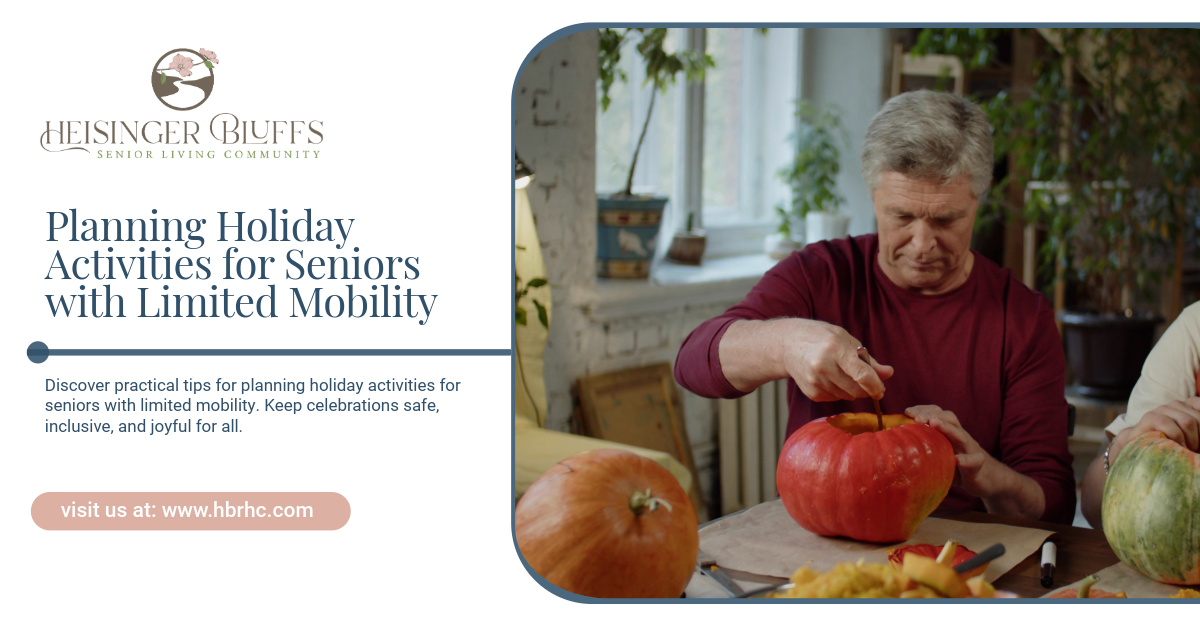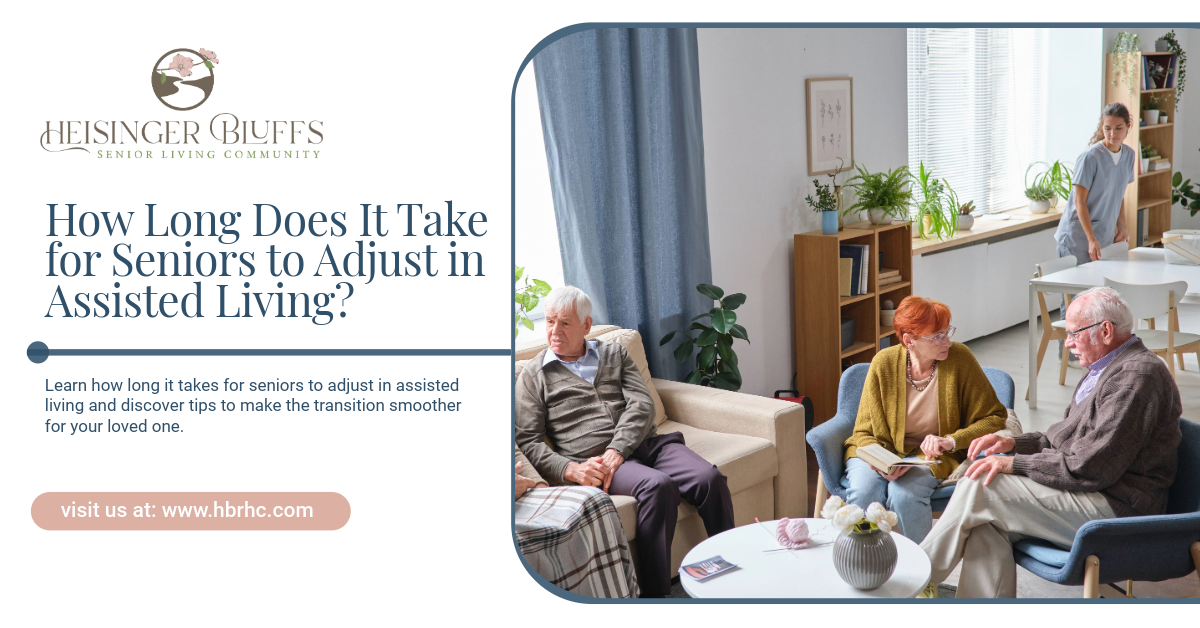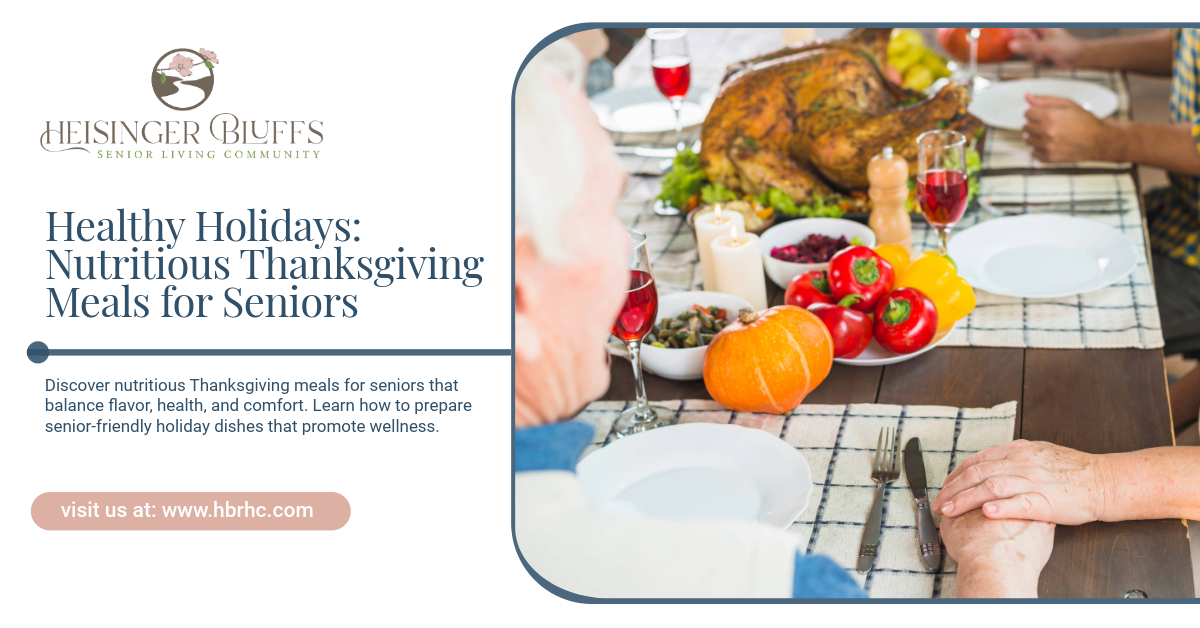Planning Holiday Activities for Seniors with Limited Mobility

Key Highlights
- Seniors with limited mobility can still enjoy meaningful, festive holiday experiences.
- Safety, accessibility, and comfort are key when planning activities.
- Adapted games, crafts, and social events promote engagement and social connection.
- Incorporating music, reminiscence, and light physical activity enhances mood and well-being.
- Planning ensures everyone can participate and enjoy the holidays.
Holidays are a time for family, connection, and joy, but for seniors with limited mobility, traditional celebrations can pose unique challenges. Whether due to arthritis, stroke recovery, joint pain, or chronic illness, mobility limitations may restrict participation in typical holiday activities.
With thoughtful planning and creative adaptations, seniors with limited mobility can enjoy the warmth and excitement of the season without risk or discomfort. This guide provides tips, ideas, and strategies for organizing holiday activities that are safe, inclusive, and truly enjoyable.
Holiday Activities for Seniors with Limited Mobility
1. Prioritize Safety and Accessibility
Safety should be the first consideration when planning activities for seniors with limited mobility.
Tips for a safer holiday environment:
- Ensure walkways are clear of obstacles and trip hazards.
- Use non-slip mats and secure rugs.
- Place chairs with armrests in areas where seniors will gather.
- Ensure adequate lighting in all activity areas.
- Consider the use of mobility aids (walkers, canes, wheelchairs) in activity setup.
Creating a safe environment allows seniors to participate comfortably and reduces the risk of falls or injuries.
2. Choose Inclusive Activities
Activities should be adapted to accommodate varying levels of mobility. The goal is participation, not performance.
Types of inclusive activities:
- Seated crafts: Painting, ornament-making, or card crafting while seated.
- Tabletop games: Bingo, trivia, or card games.
- Music therapy: Singing along to favorite holiday songs or playing simple percussion instruments.
- Reminiscence activities: Sharing stories or looking through photo albums.
By focusing on activities that can be done while sitting or with minimal movement, seniors feel included and engaged.
3. Encourage Light Physical Activity
Even with limited mobility, gentle movement is beneficial for circulation, mood, and overall health.
Ideas for safe physical engagement:
- Chair yoga or stretching routines.
- Hand exercises with small holiday-themed props (like bells or soft balls).
- Light dancing while seated, following the music rhythm.
- Gentle walking with support around a decorated area.
These activities provide stimulation without overexertion, keeping seniors active and energized.
4. Adapt Traditional Holiday Games
Many classic holiday games can be modified for accessibility.
| Traditional Game | Mobility-Friendly Adaptation |
|---|---|
| Pin the Nose on Rudolph | Use large, lightweight felt pieces at seated height |
| Holiday scavenger hunt | Use table-based clues and small items within reach |
| Musical chairs | Replace with “musical chairs bingo” or seated dance games |
| Gift exchange | Use “pass the gift” with a table or lap-friendly method |
These adaptations allow seniors to participate fully while minimizing physical strain.
5. Incorporate Sensory Activities
Seniors with limited mobility may benefit from activities that stimulate the senses, supporting relaxation, memory, and joy.
Sensory activity ideas:
- Aromatherapy with holiday scents like cinnamon, pine, or vanilla.
- Touch-friendly crafts like decorating textured ornaments or holiday stockings.
- Listening to seasonal music or nature sounds.
- Tasting holiday treats in small, safe portions.
Sensory engagement creates a festive atmosphere without requiring significant movement.
6. Promote Social Connection
Socialization is crucial for seniors’ mental and emotional health, particularly during the holidays when feelings of isolation may increase.
Ways to foster social connection:
- Host small group activities to encourage conversation.
- Pair residents or family members for collaborative crafts or games.
- Facilitate video calls with distant family members for shared activities.
- Celebrate accomplishments, such as completed crafts, to encourage camaraderie.
Positive social interactions improve mood, reduce loneliness, and enhance holiday enjoyment.
7. Use Technology for Engagement
Technology can make holidays more interactive and accessible.
Technology-based ideas:
- Video calls: Include remote family members in real-time celebrations.
- Digital games: Interactive holiday-themed quizzes or apps.
- Virtual tours: Explore holiday light displays or museum exhibits online.
- Streaming concerts: Enjoy live holiday music from home or communal spaces.
Even simple tech tools can bridge gaps caused by mobility limitations, connecting seniors to loved ones and entertainment.
8. Provide Adaptive Tools and Seating
Ensuring comfort and accessibility is essential to meaningful participation.
- Use chairs with firm back support and armrests.
- Provide lap trays for crafts or snacks.
- Use large, easy-to-handle utensils and game pieces.
- Ensure tables are wheelchair-accessible and stable.
These adjustments reduce strain and make activities more enjoyable.
9. Plan Short, Flexible Sessions
Long or rigid activity schedules can tire seniors quickly.
Tips for scheduling:
- Break activities into 20–30 minute sessions with rest periods.
- Offer multiple activity options throughout the day.
- Monitor energy levels and adjust participation accordingly.
- Encourage choice — seniors should feel comfortable opting in or out.
Flexibility ensures seniors remain engaged without fatigue or frustration.
10. Incorporate Meaningful Traditions
Even with mobility limitations, traditions provide comfort, familiarity, and a sense of purpose.
- Decorate a small tree or wreath together.
- Bake simple holiday treats with assistance.
- Share family stories or read holiday-themed books aloud.
- Create a gratitude jar where residents contribute notes of appreciation.
Traditions reinforce connection, memory, and emotional well-being.
11. Adapt Holiday Meals and Cooking Activities
Food is central to holiday celebrations. Seniors with limited mobility can still enjoy festive meals safely.
Strategies include:
- Pre-prepared or assistive kitchen tools for cooking activities.
- Small, easy-to-handle ingredients for baking or decorating.
- Seated participation in meal prep or table setting.
- Focus on presentation and sharing rather than physically intensive tasks.
Participating in meal-related activities strengthens engagement and inclusion.
12. Create a Calm and Comfortable Environment
The environment impacts how seniors experience holiday activities.
Suggestions for an optimal setting:
- Keep noise levels moderate; background music can be soothing.
- Decorate with simple, familiar holiday themes.
- Ensure seating areas are accessible and well-lit.
- Provide blankets or cushions for added comfort.
A calm, inviting environment enhances enjoyment and reduces stress.
13. Include Reminiscence and Memory Activities
For seniors with limited mobility, reminiscing about past holidays or life experiences provides meaningful mental stimulation.
- Share photos from previous celebrations.
- Encourage storytelling sessions or memory-sharing circles.
- Create scrapbooks or memory boards together.
- Use music from their youth to spark conversation and memories.
Reminiscence activities strengthen emotional well-being and social connection.
14. Encourage Family and Volunteer Participation
Support from family members or volunteers can enhance holiday celebrations for seniors with mobility challenges.
- Invite family to assist with crafts or games.
- Encourage volunteers to read holiday stories or lead activities.
- Guide to ensure activities remain safe and inclusive.
Extra hands help ensure seniors enjoy the holiday without stress or fatigue.
15. Celebrate Success and Participation
Even small achievements should be acknowledged and celebrated.
- Display completed crafts or decorations in common areas.
- Celebrate participation with verbal praise or certificates.
- Take photos to commemorate the event for memory-sharing.
Recognizing participation fosters confidence and joy, enhancing the holiday experience.
Final Thoughts
Planning holiday activities for seniors with limited mobility requires creativity, patience, and consideration. By prioritizing safety, comfort, social connection, and meaningful engagement, seniors can fully enjoy the spirit of the season. Activities adapted for mobility limitations not only enhance physical and mental well-being but also strengthen relationships and create lasting memories.
At Heisinger Bluffs, we specialize in creating accessible and inclusive programs for seniors in assisted living, memory care, and respite care. Our holiday activities are thoughtfully designed to ensure every resident, regardless of mobility, can celebrate safely, comfortably, and joyfully with friends, family, and the community. Contact us today!
Frequently Asked Questions
What are some safe holiday activities for seniors with limited mobility?
Seated crafts, tabletop games, music therapy, reminiscence activities, and gentle chair exercises are excellent options.
How can I make traditional holiday games accessible?
Adapt games to be played while seated or with lightweight, easy-to-handle materials. Focus on participation rather than competition.
How long should holiday activities for seniors last?
Short sessions of 20–30 minutes with breaks are ideal to prevent fatigue and maintain engagement.
Can technology be used to include seniors in holiday celebrations?
Yes. Video calls, interactive apps, streaming concerts, and virtual tours help seniors stay connected and engaged.
How can I involve family members in mobility-friendly activities?
Family can assist with crafts, games, storytelling, and meal prep, ensuring seniors feel included and supported.
Sources:











